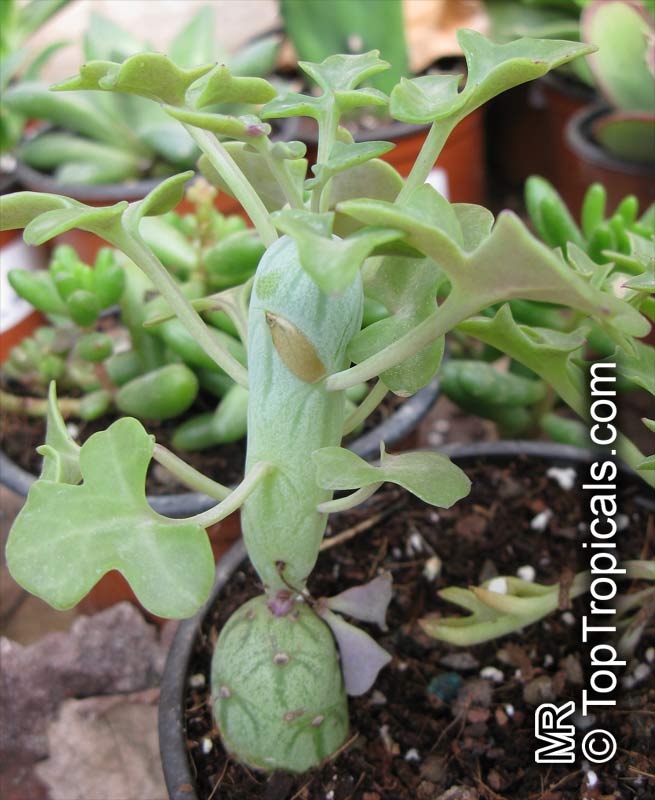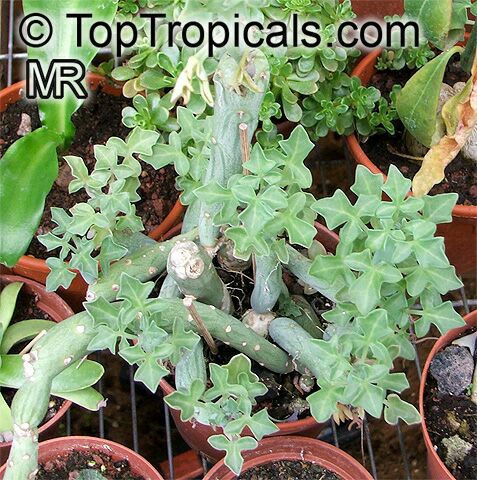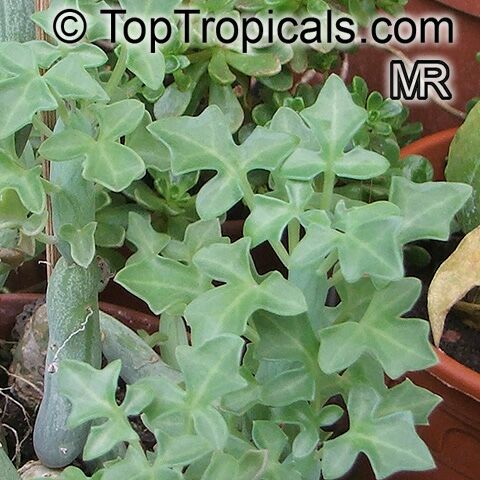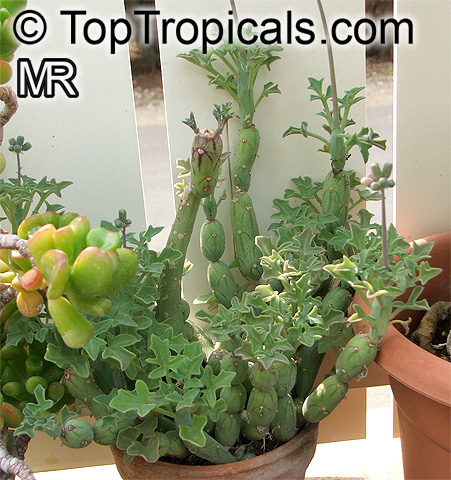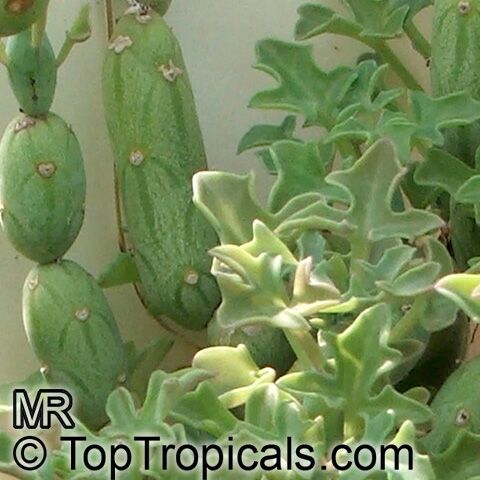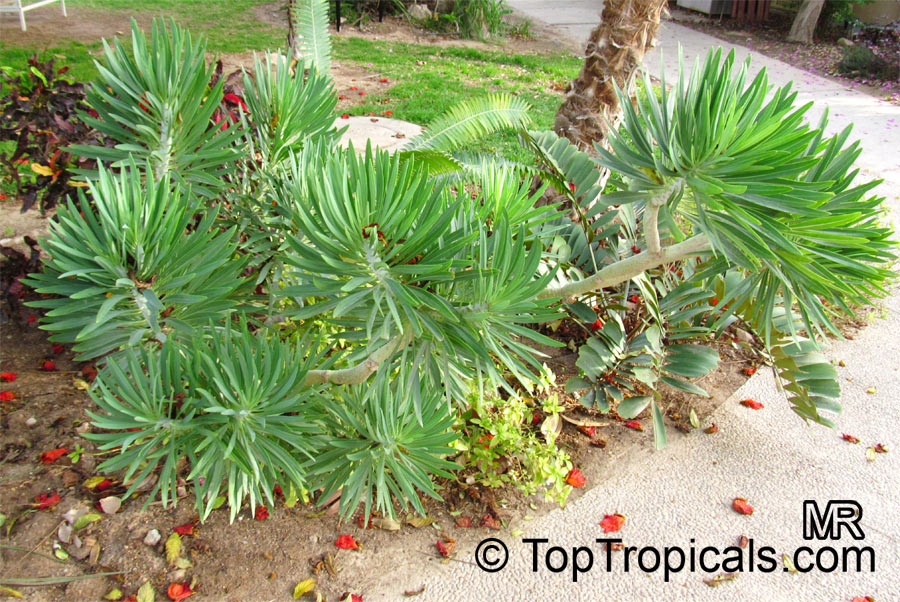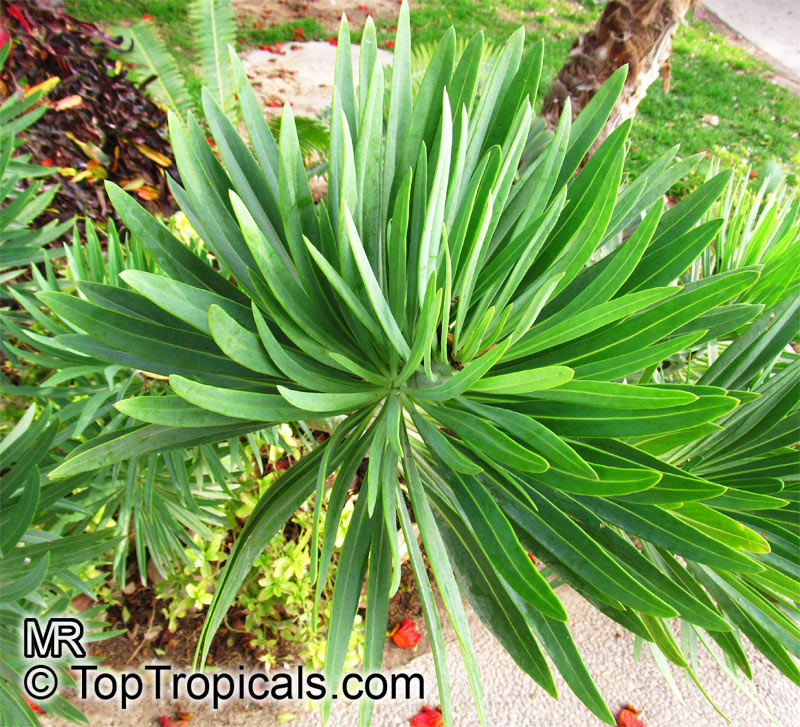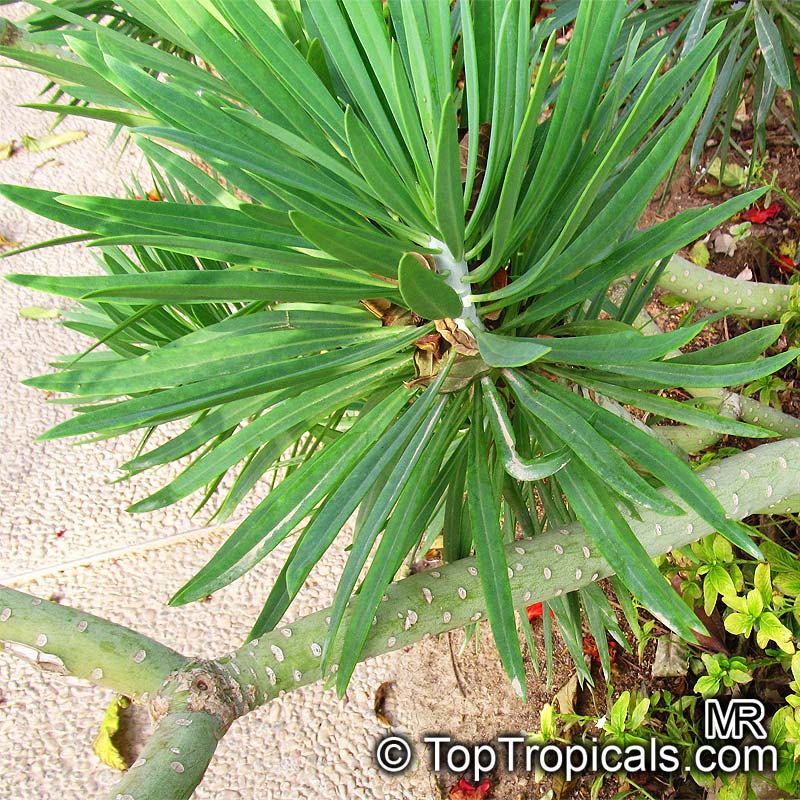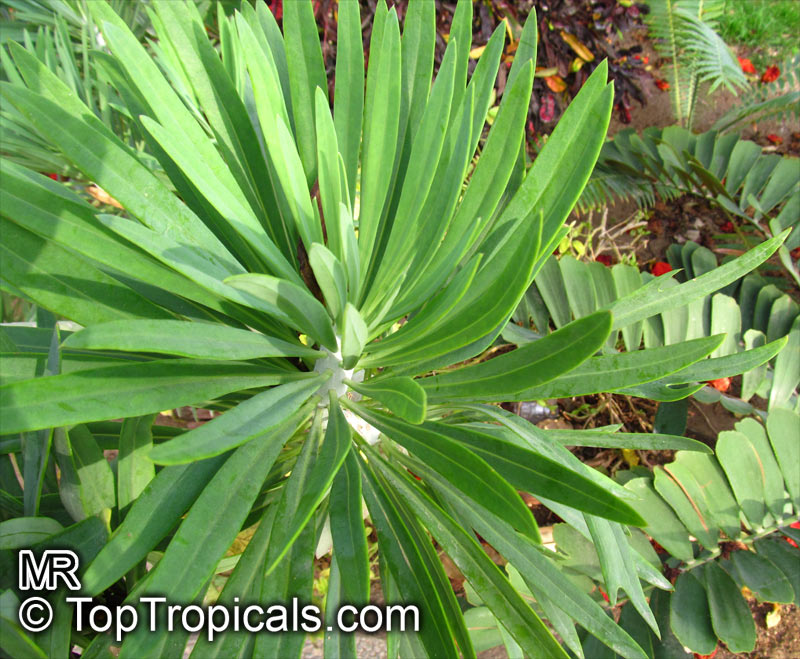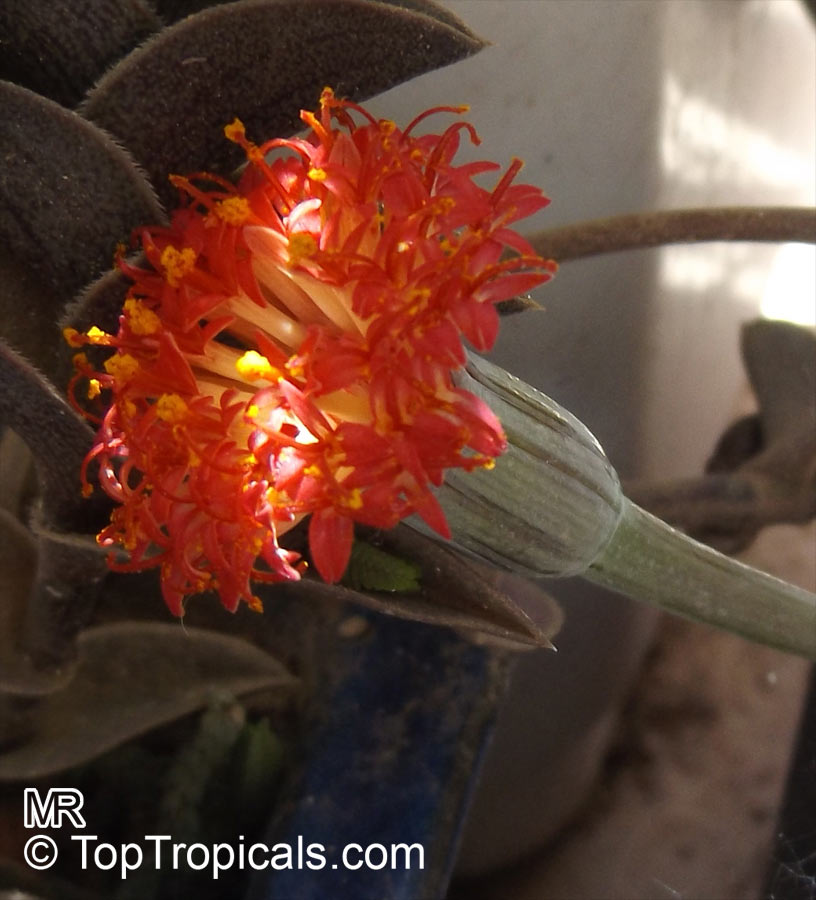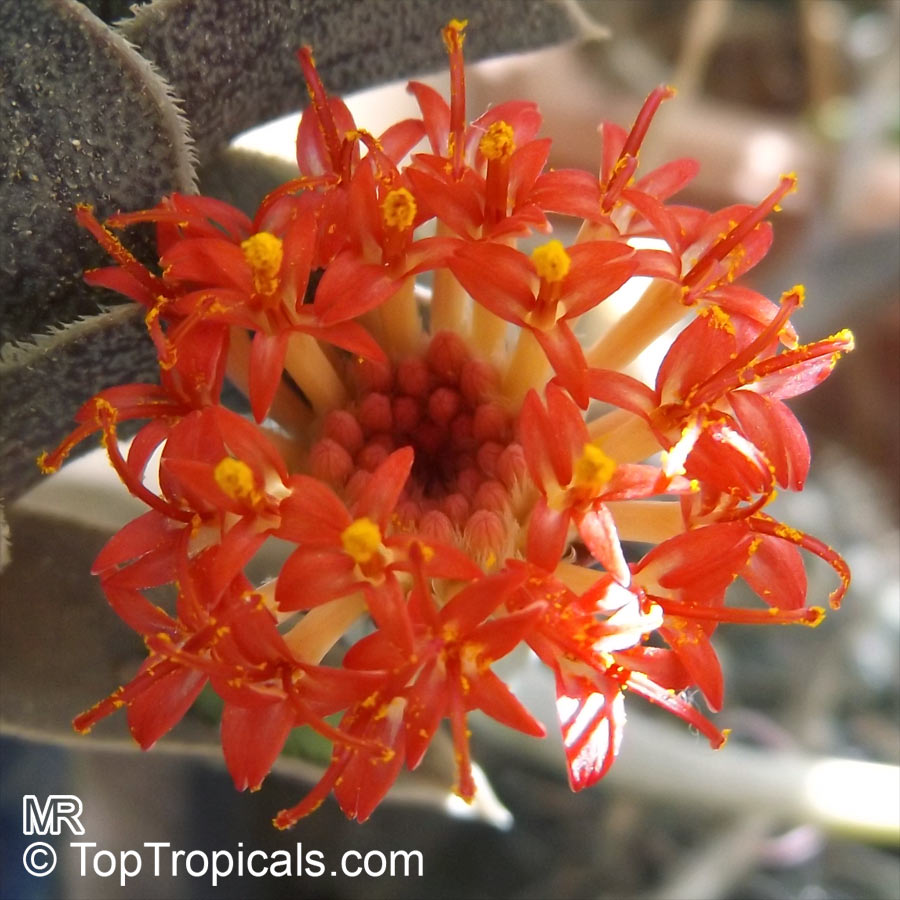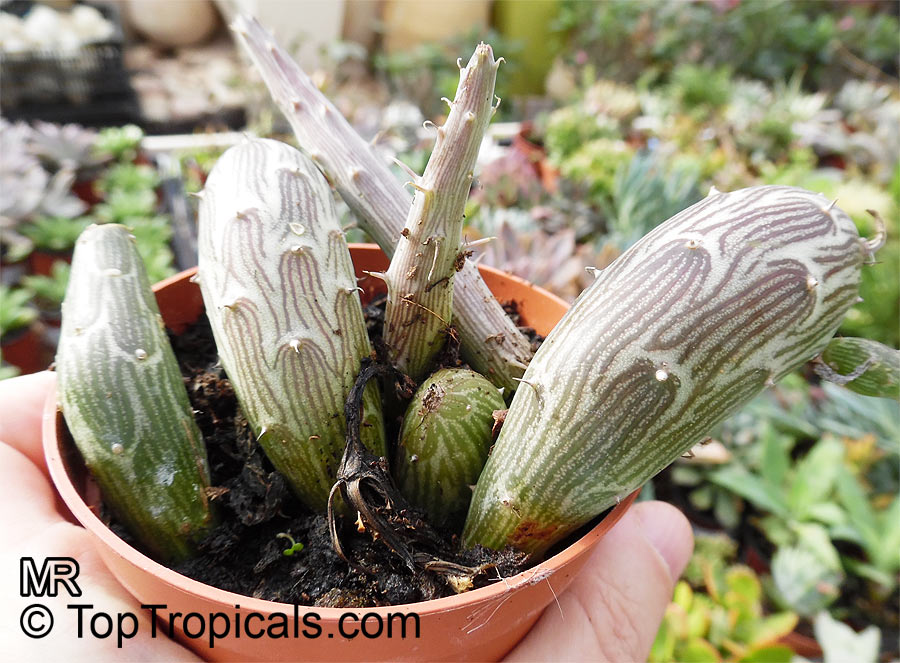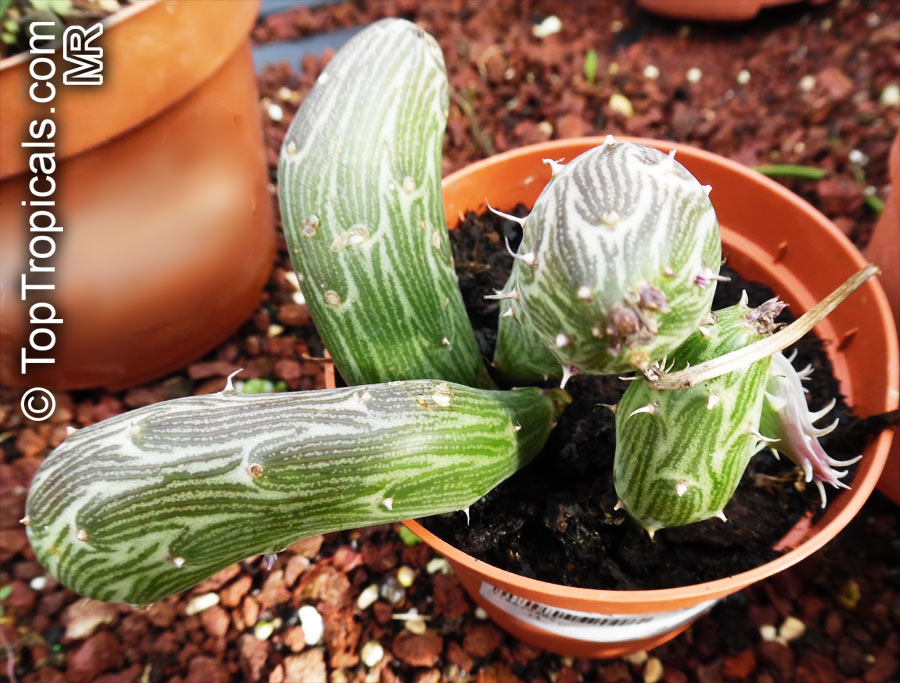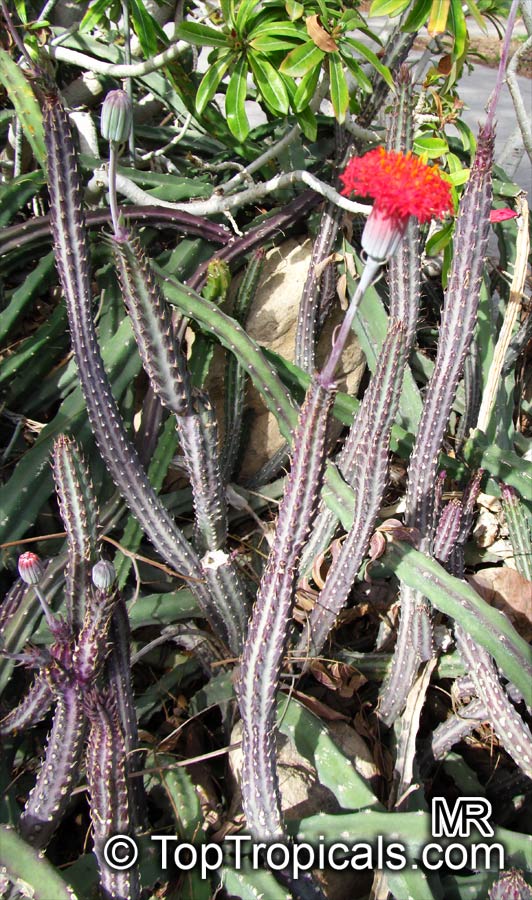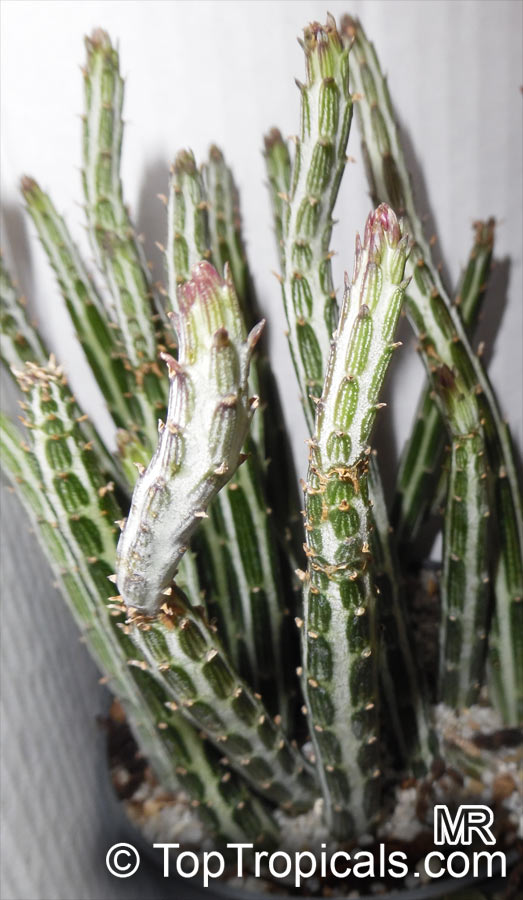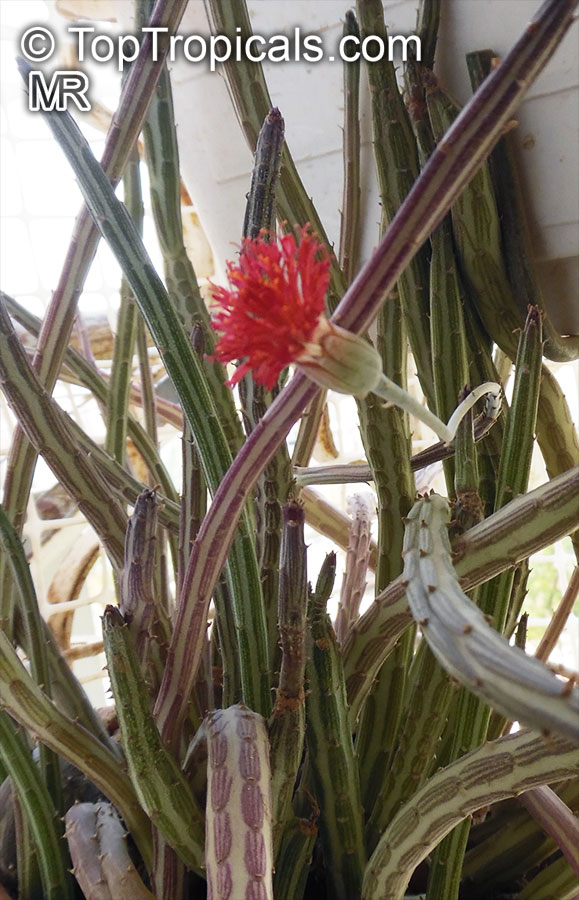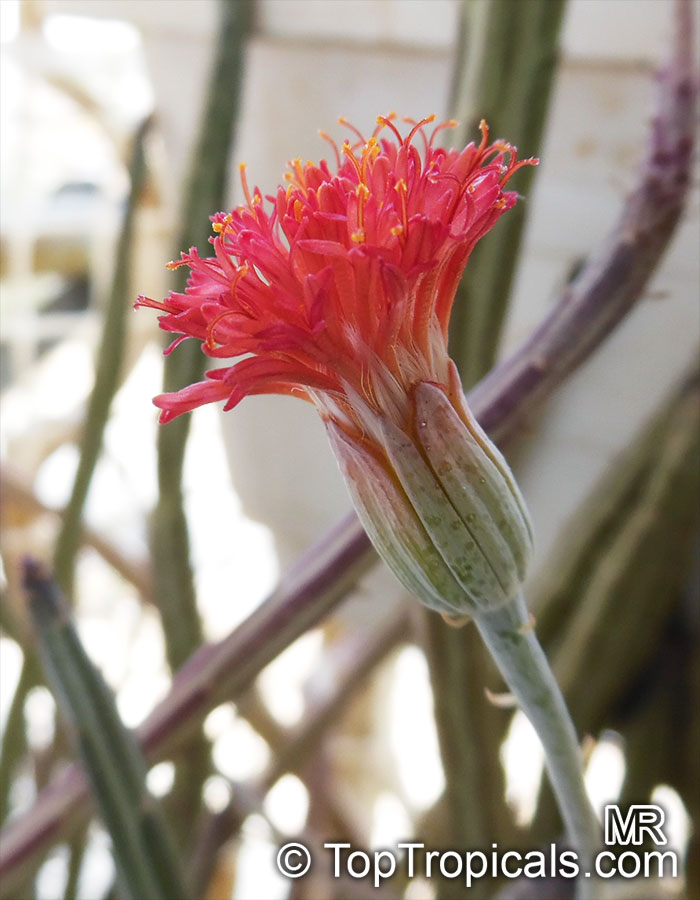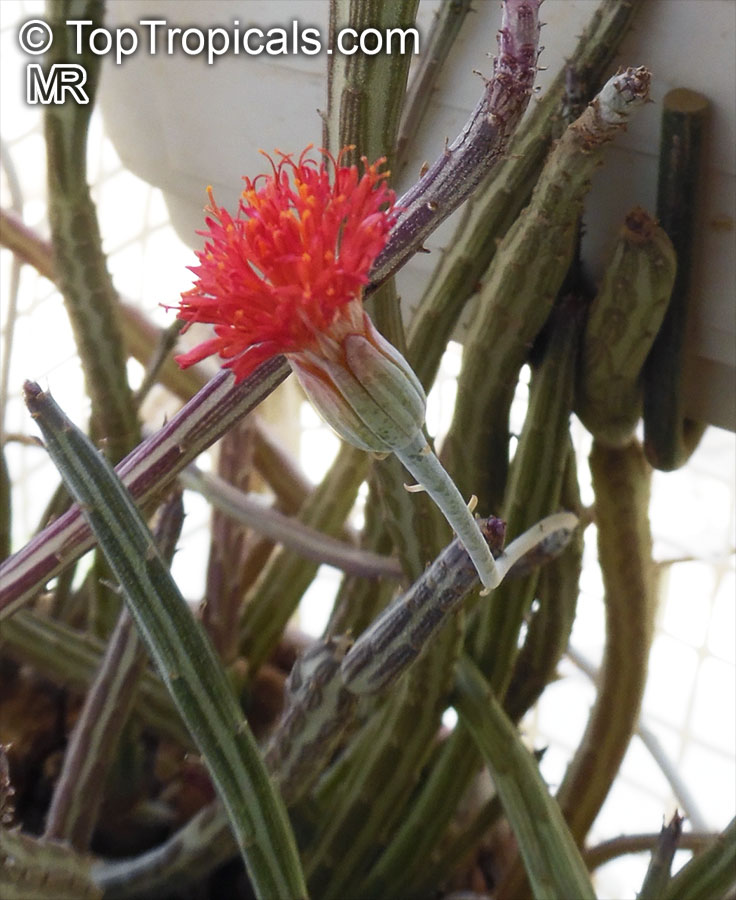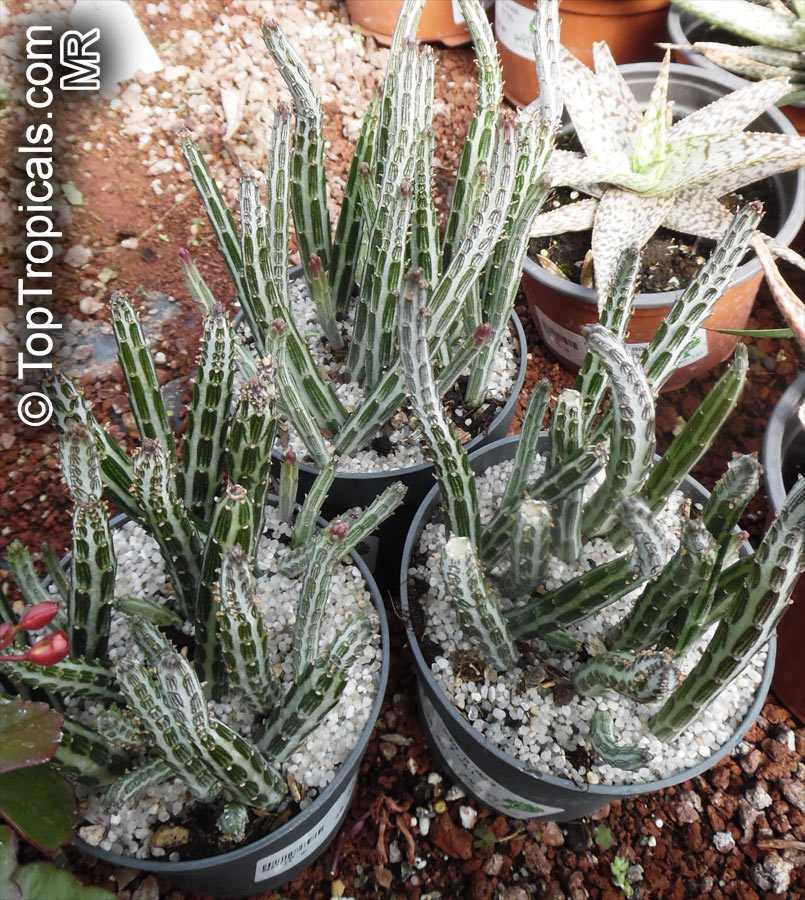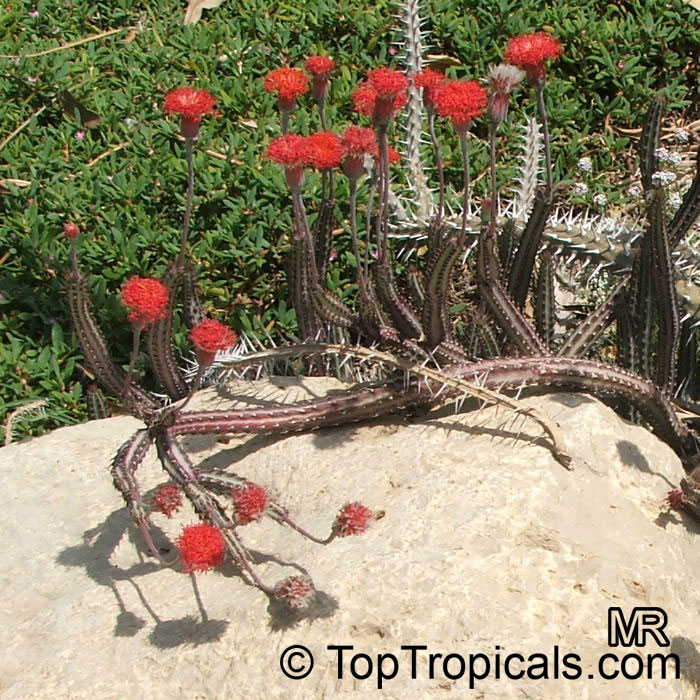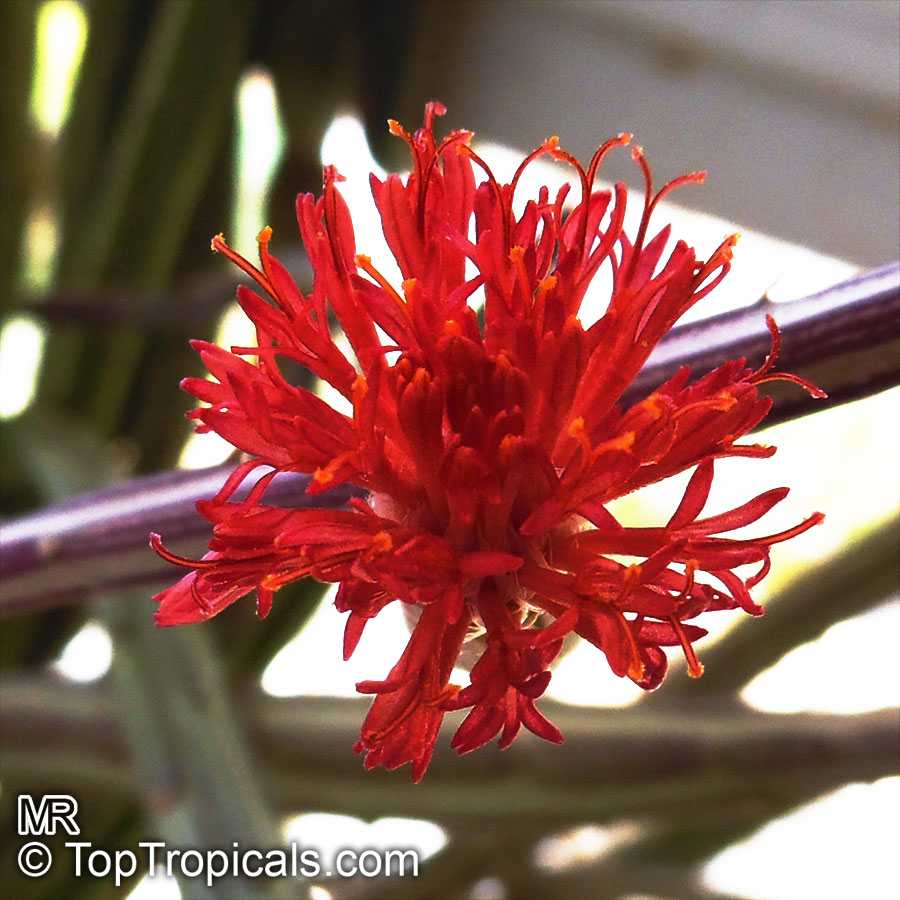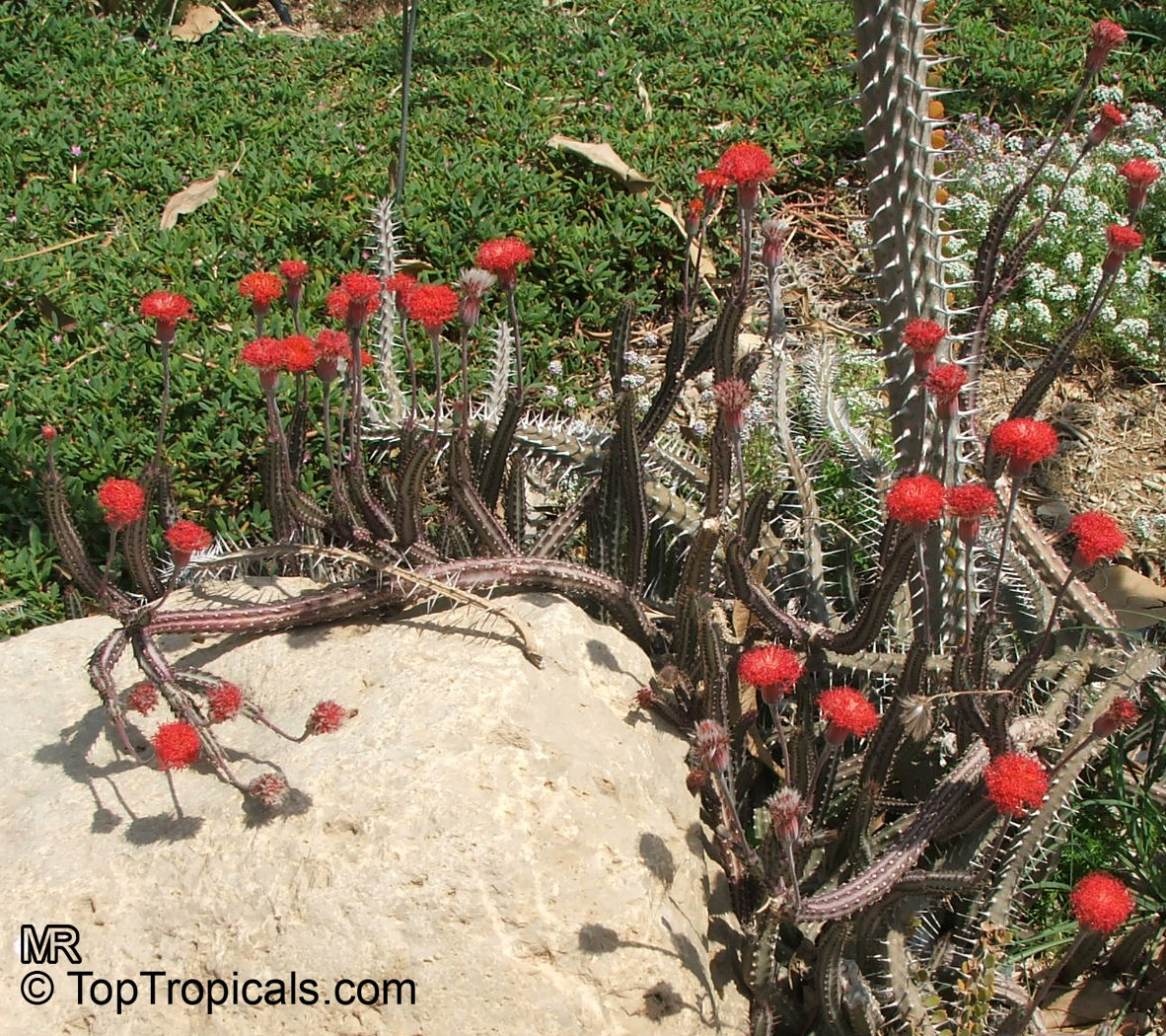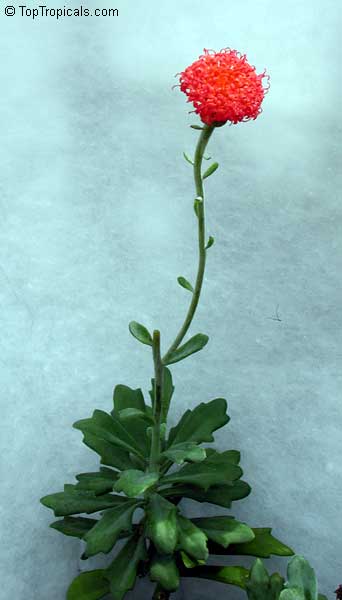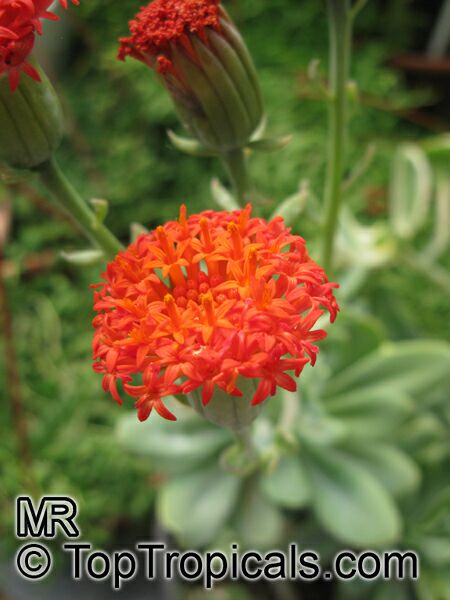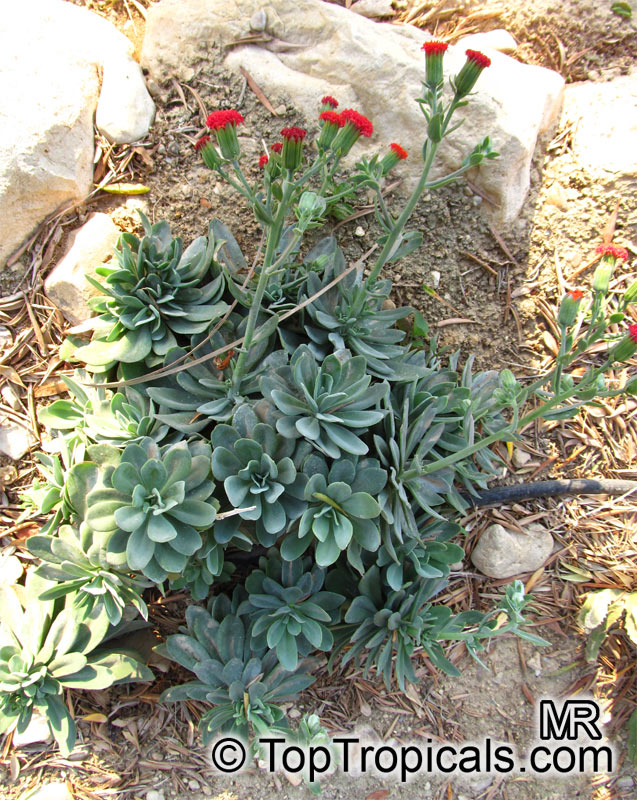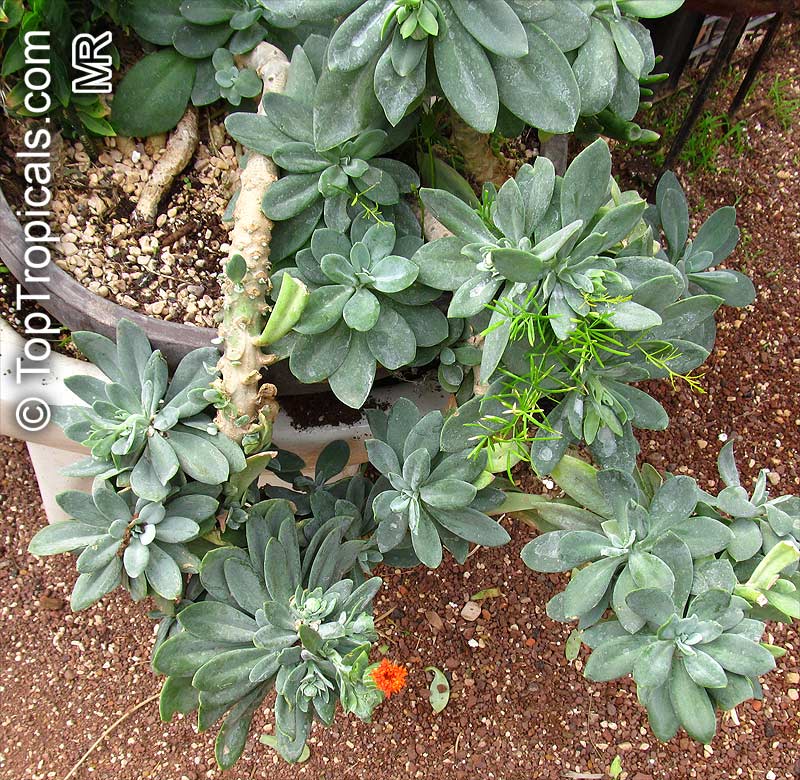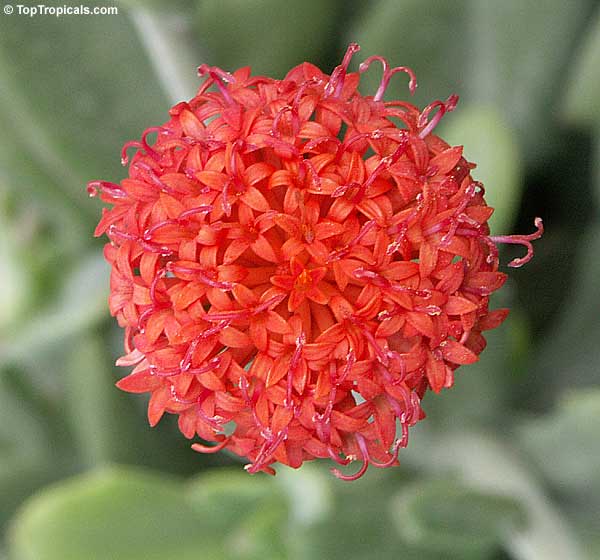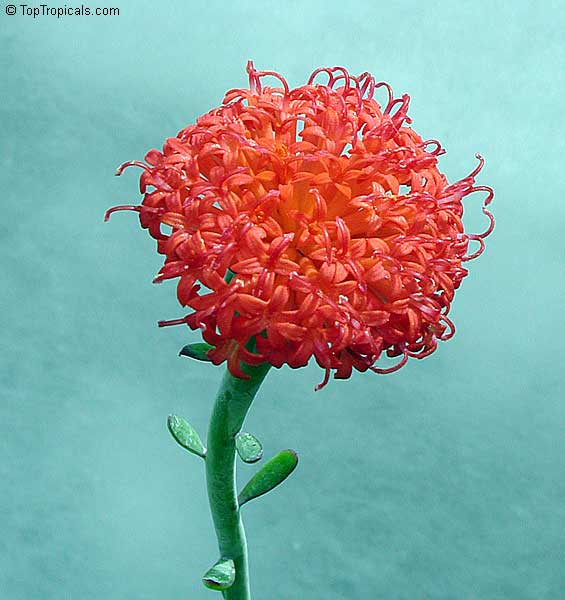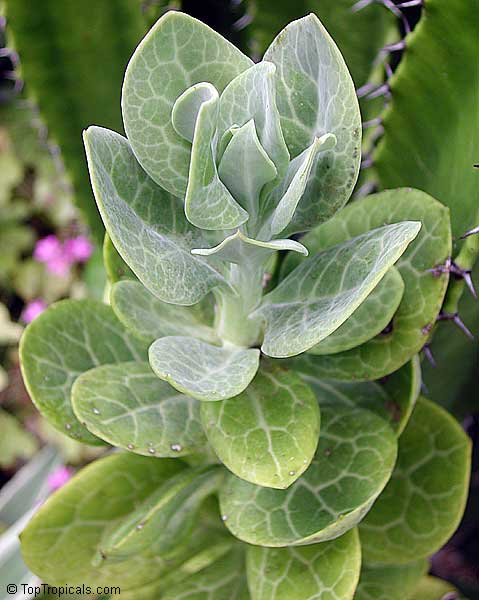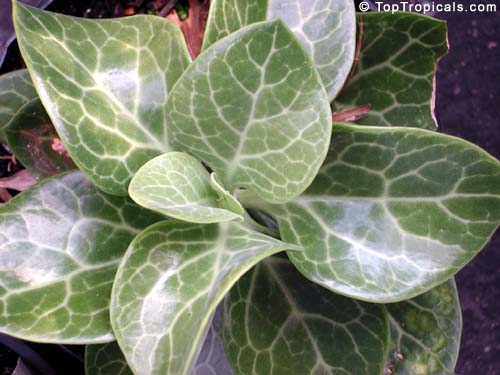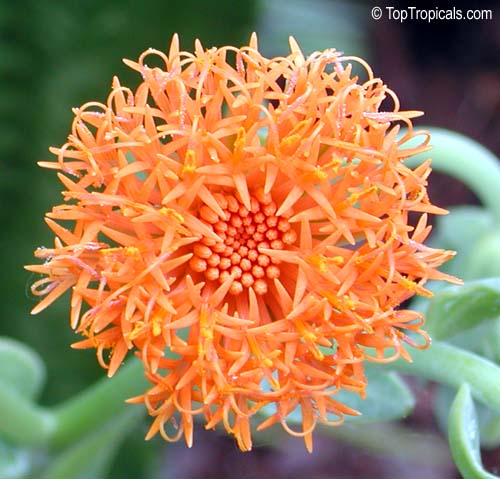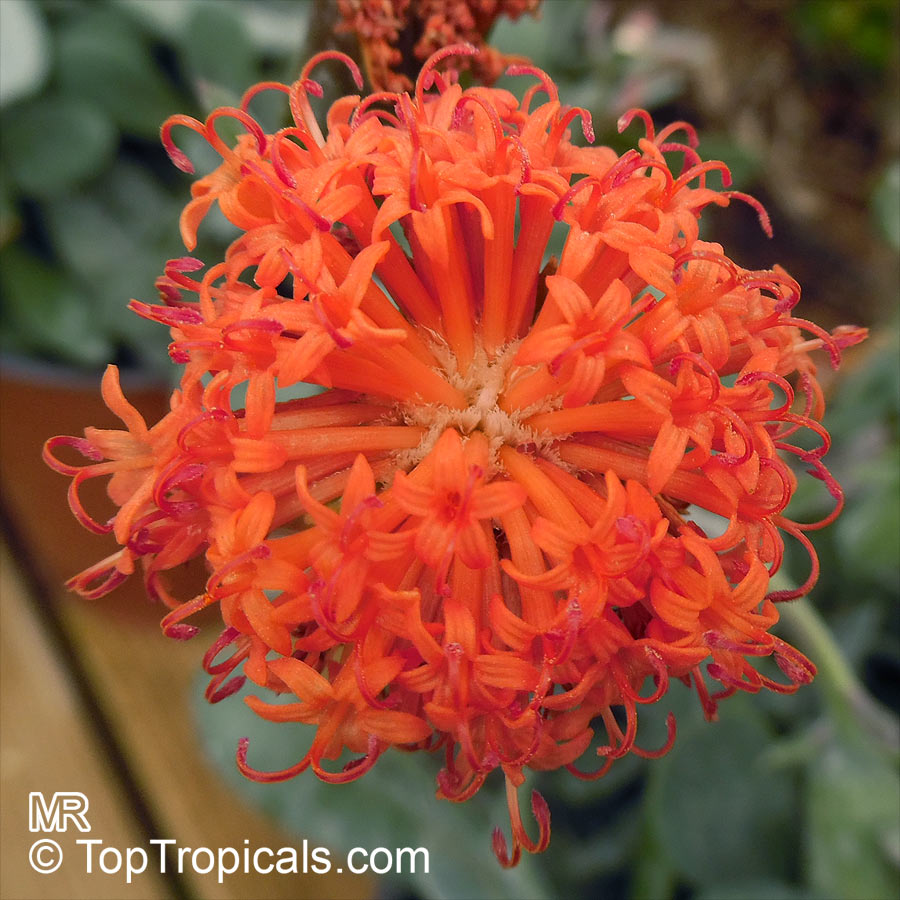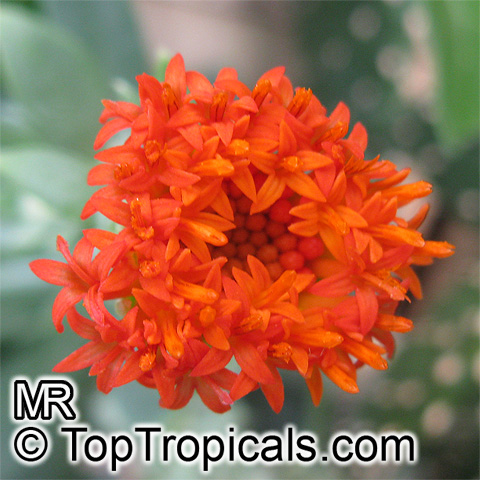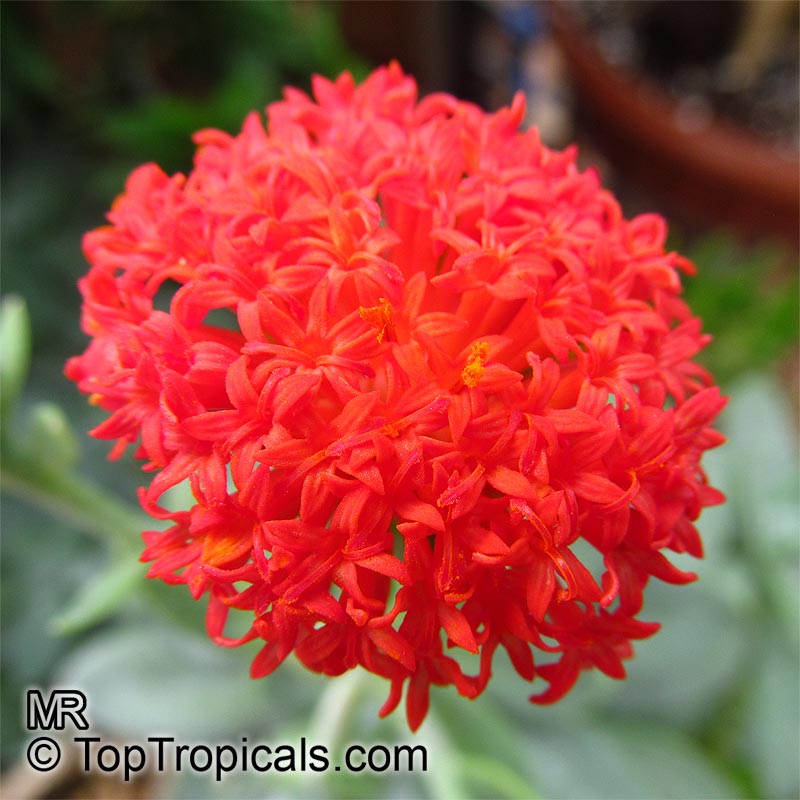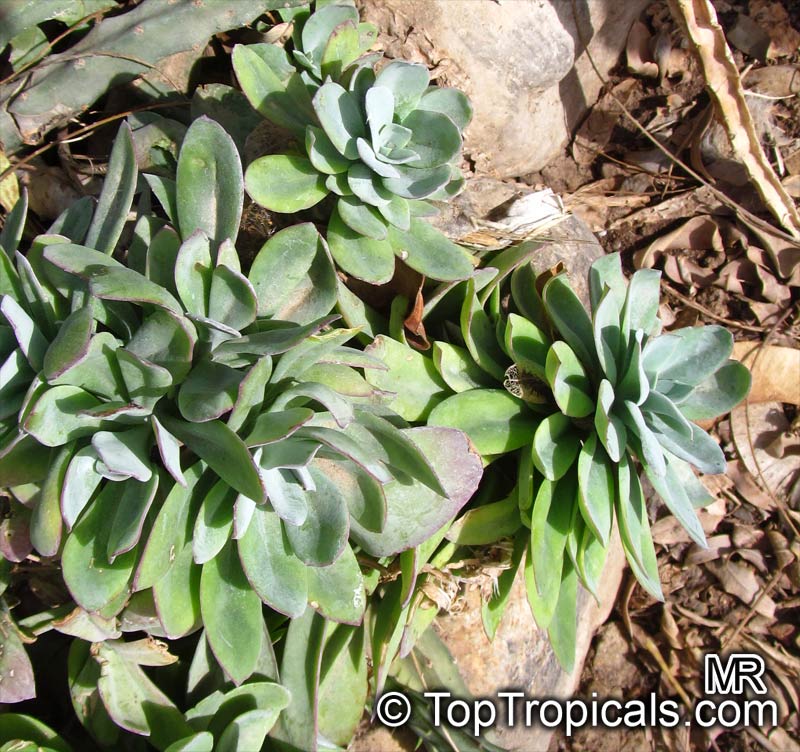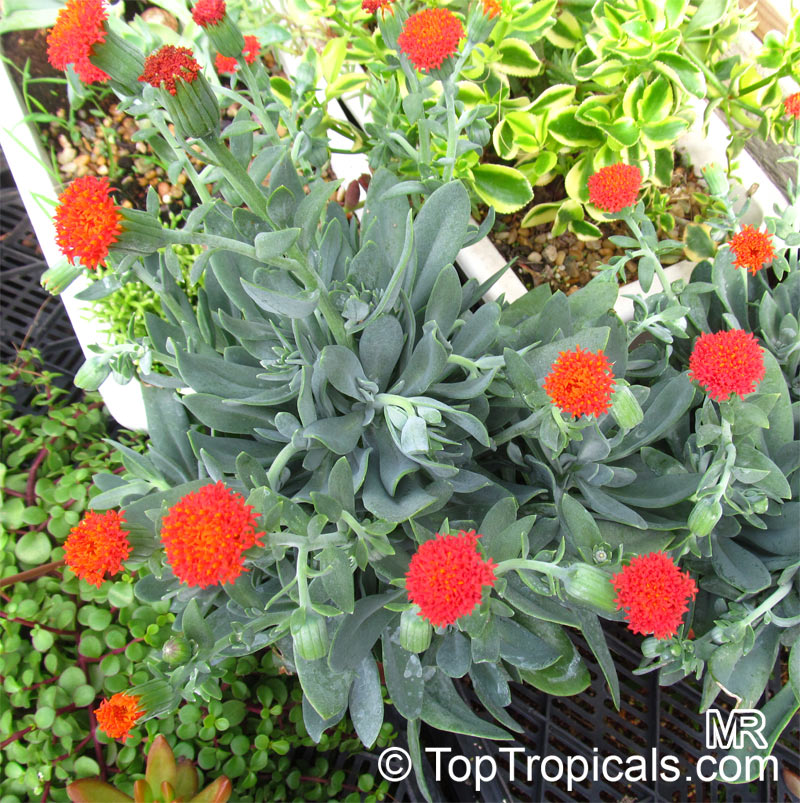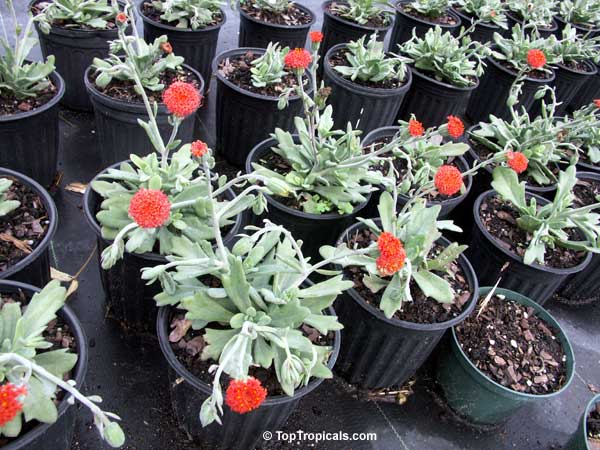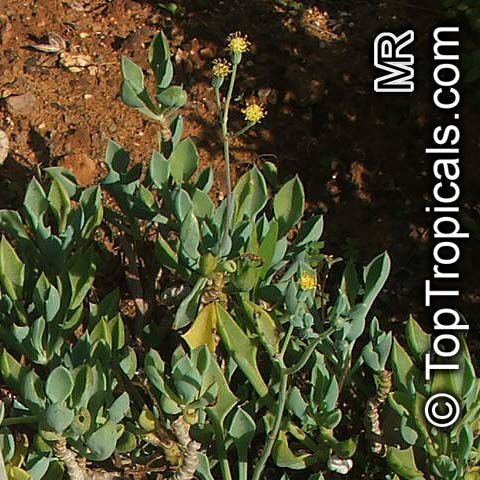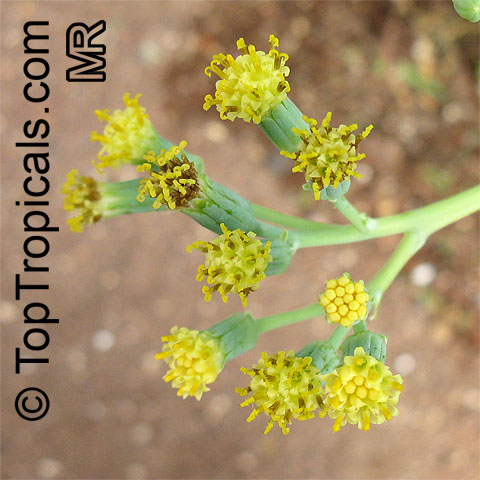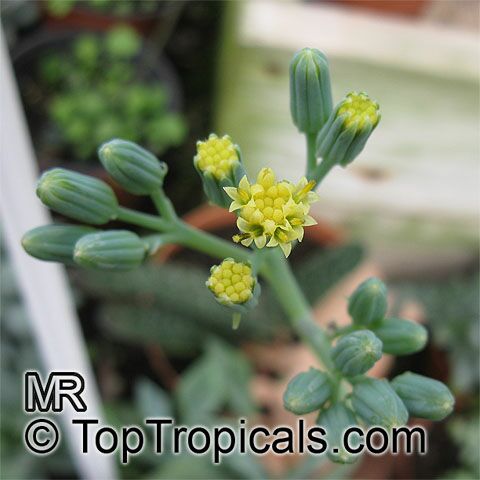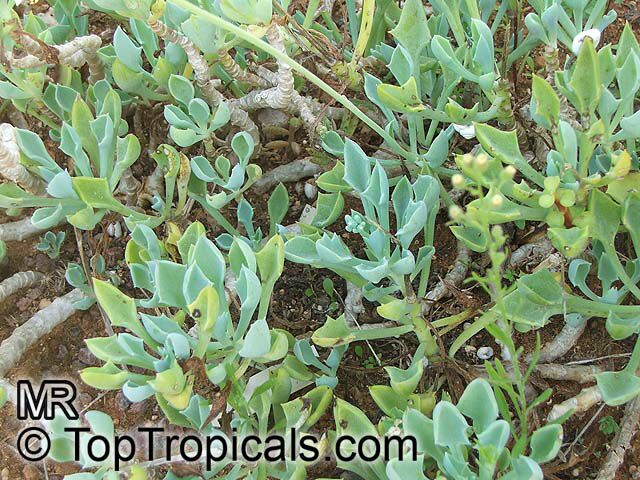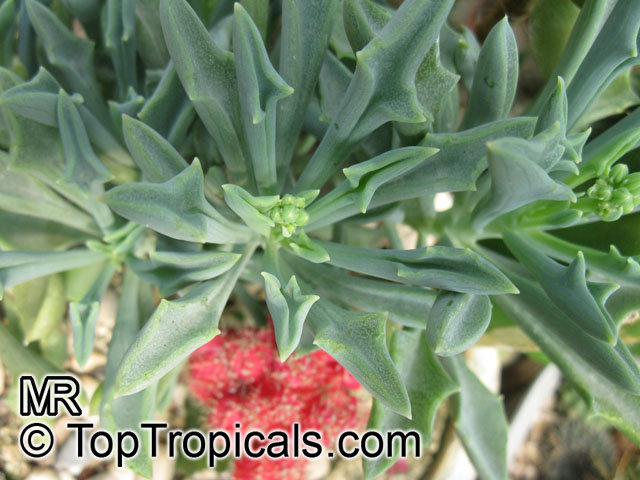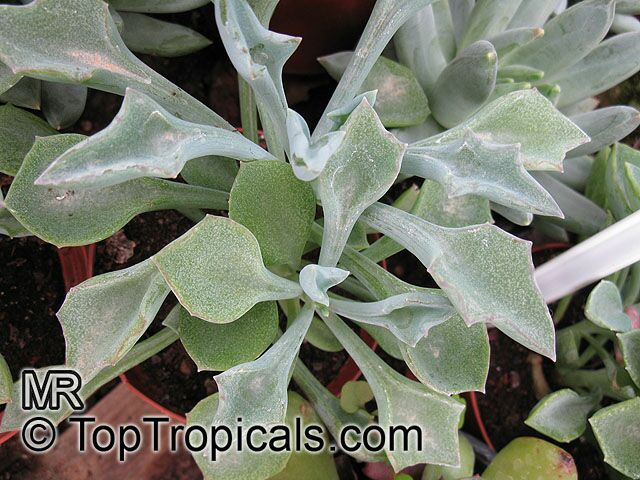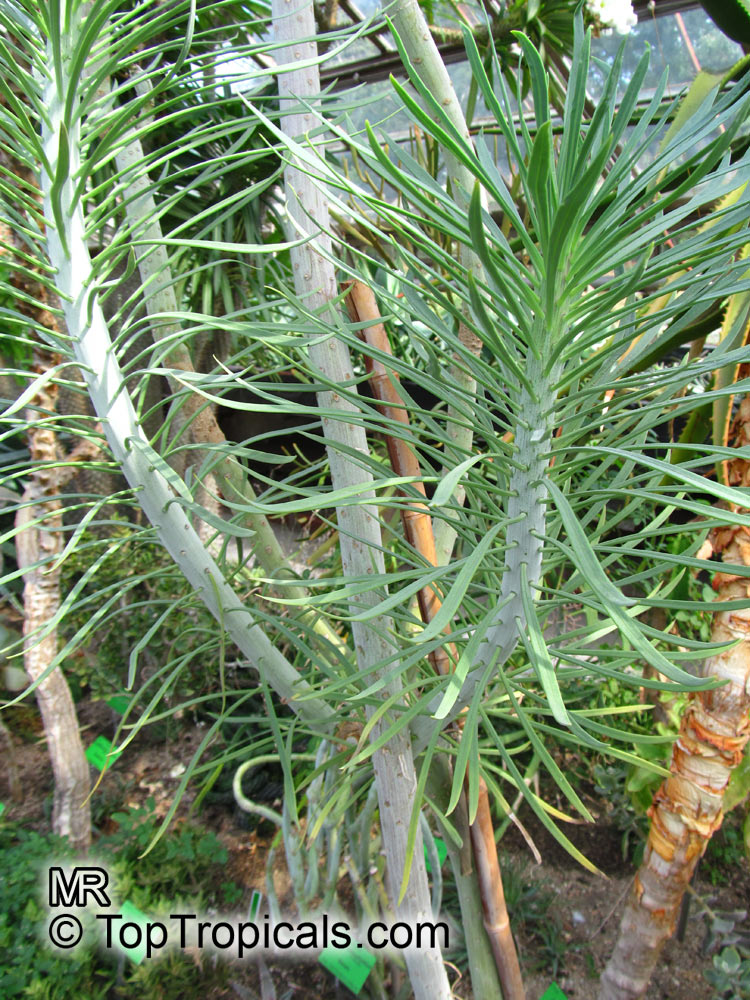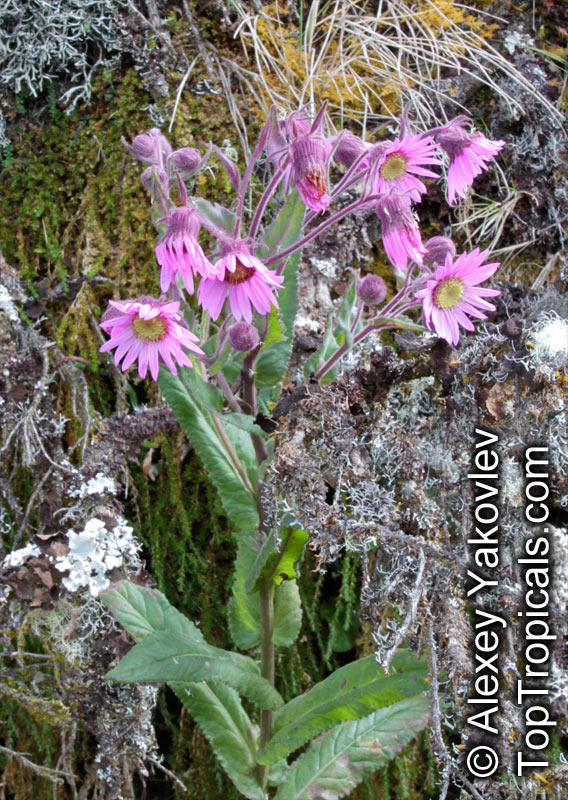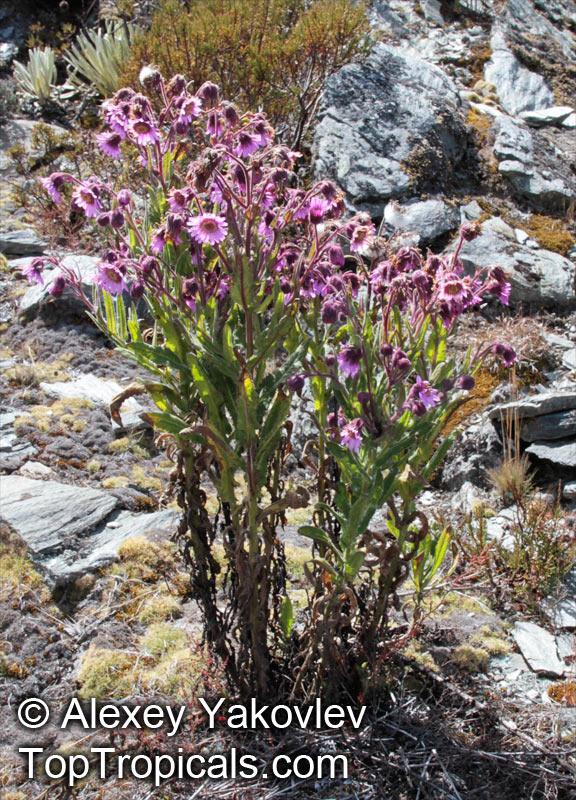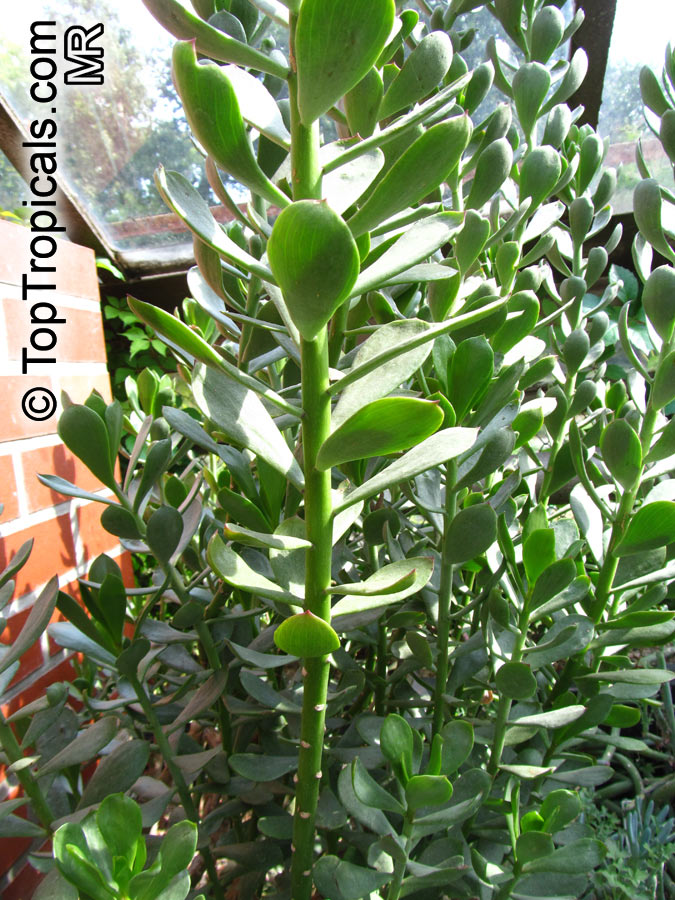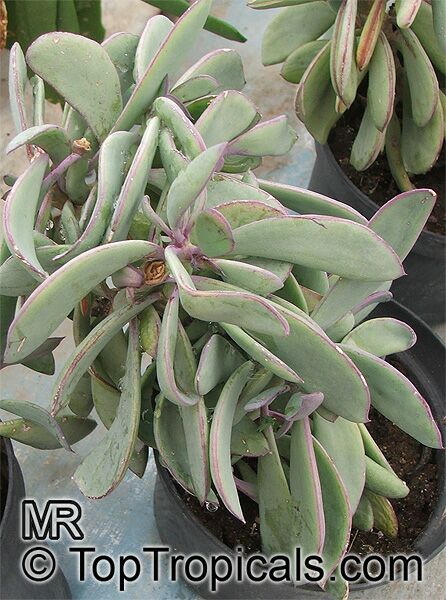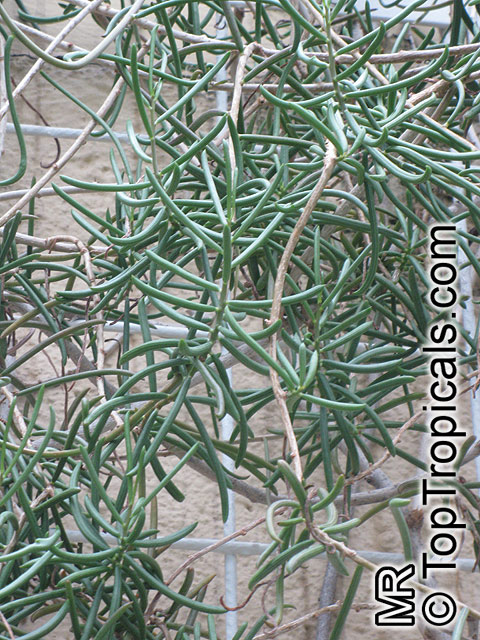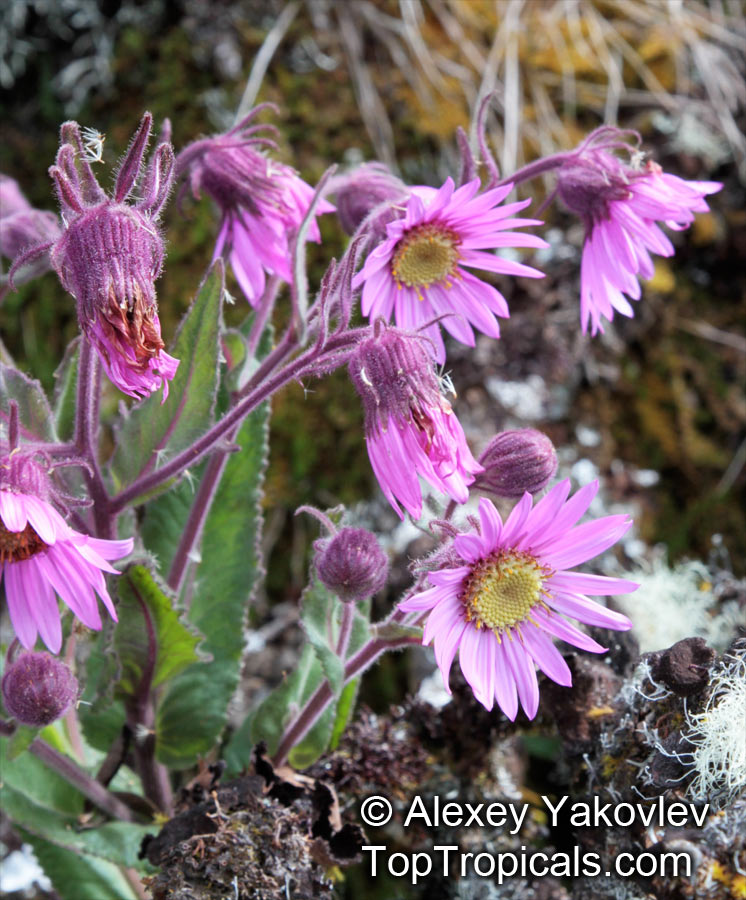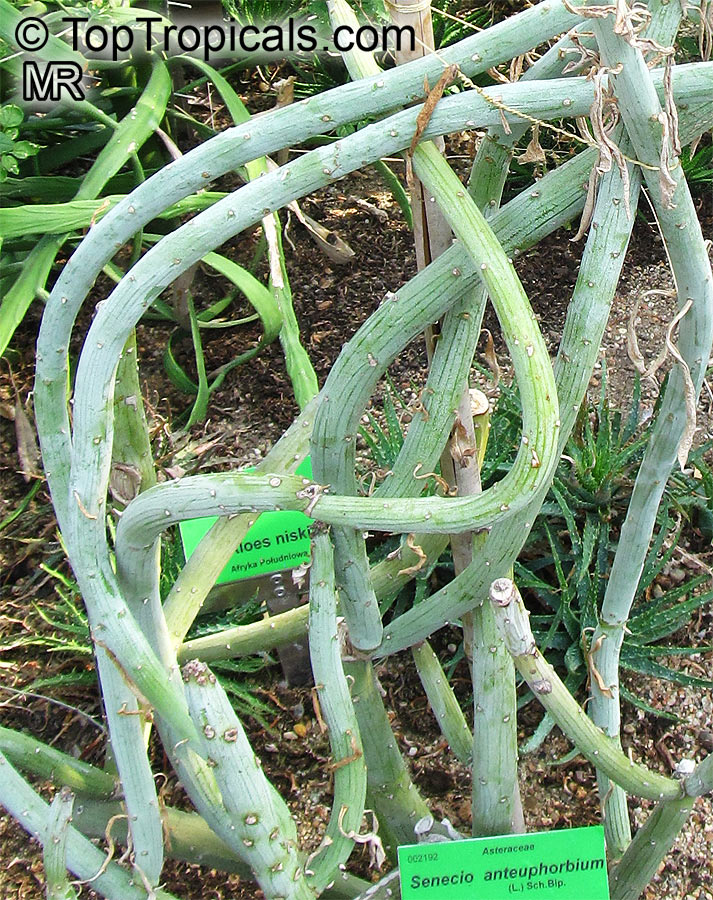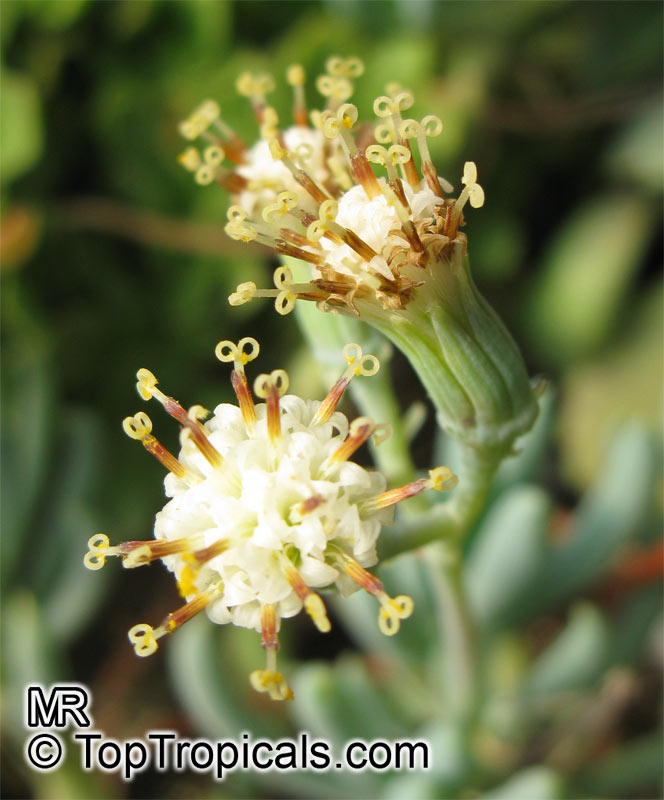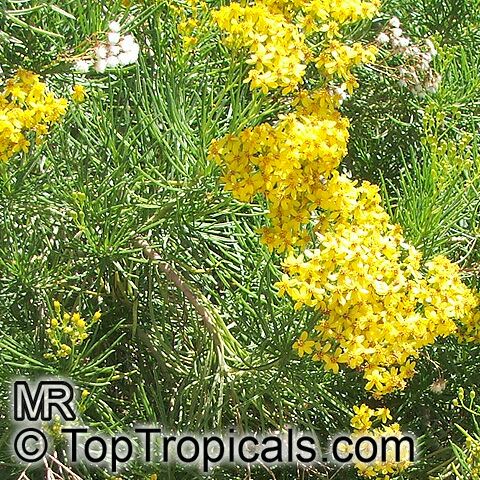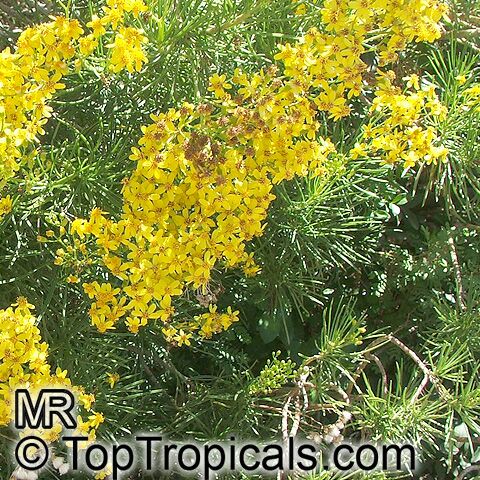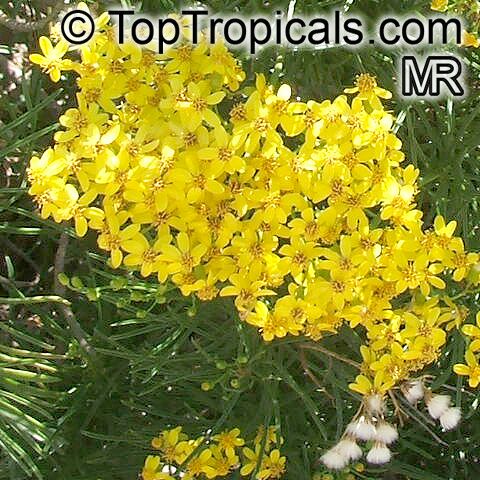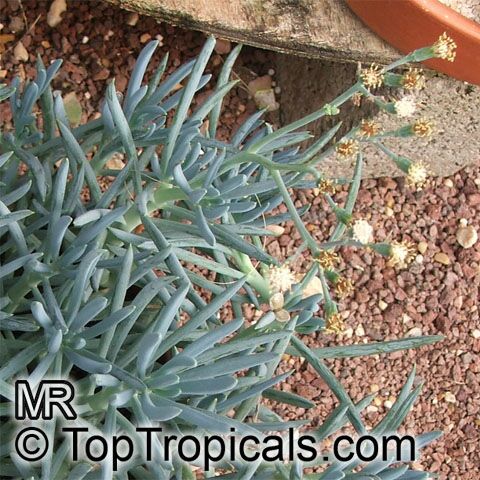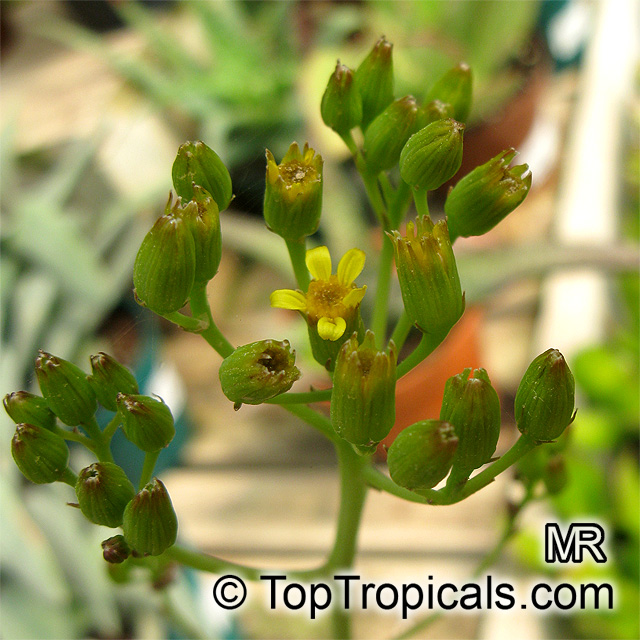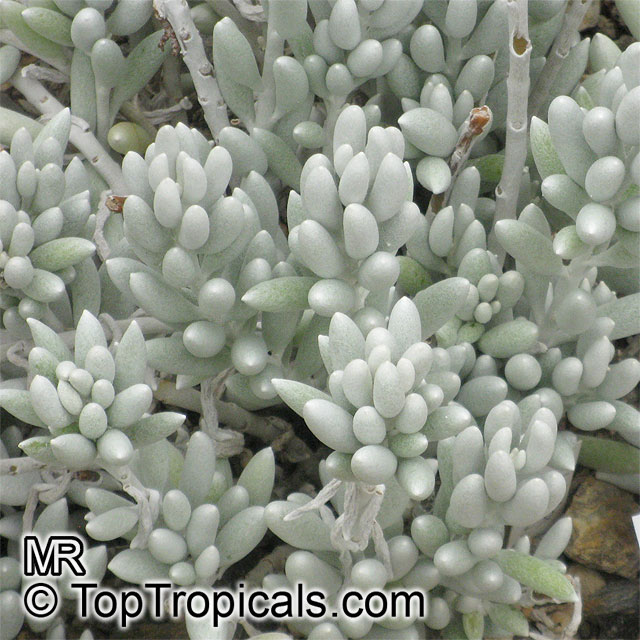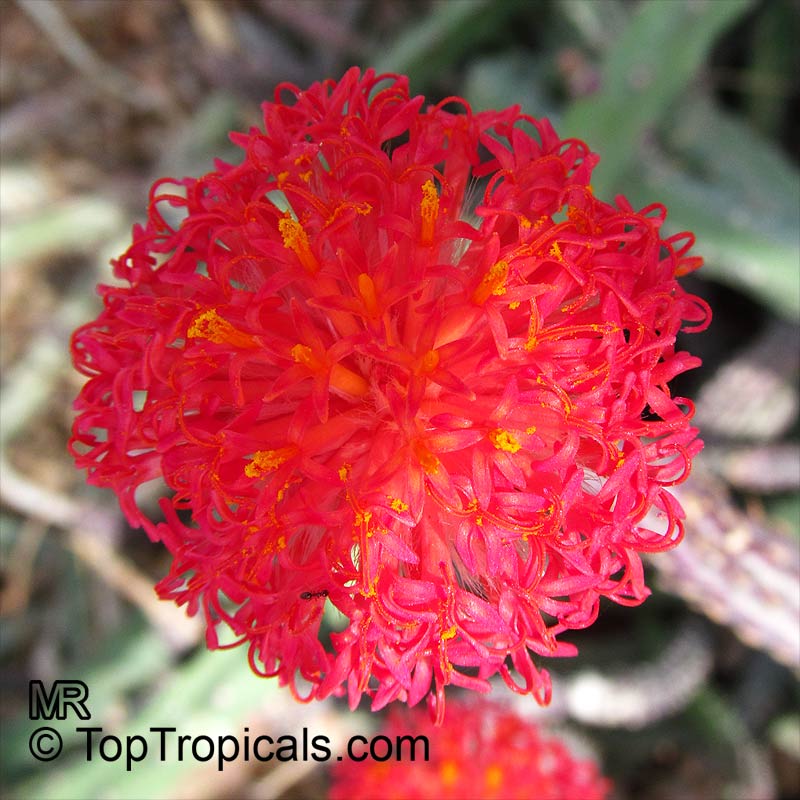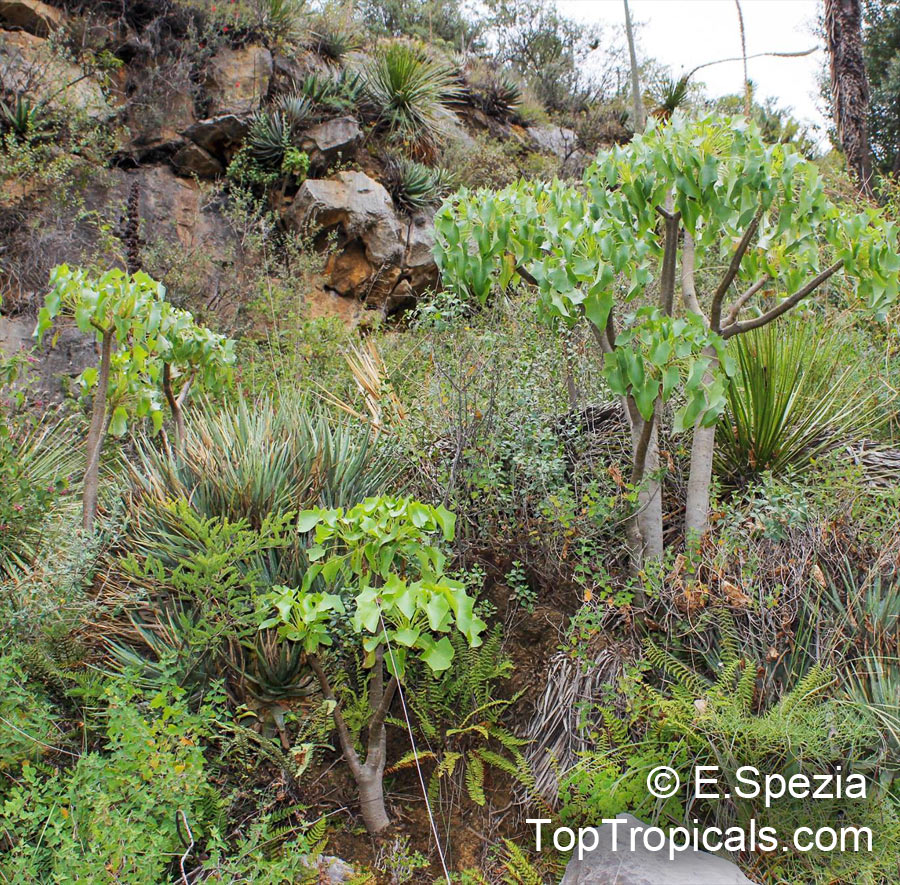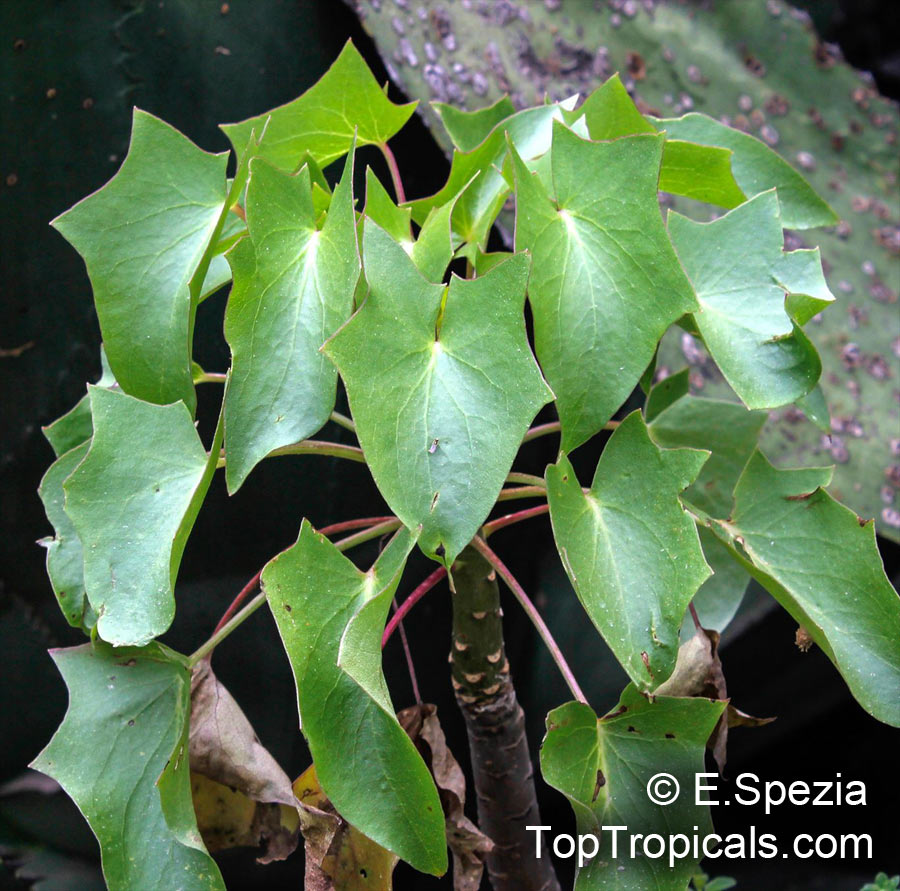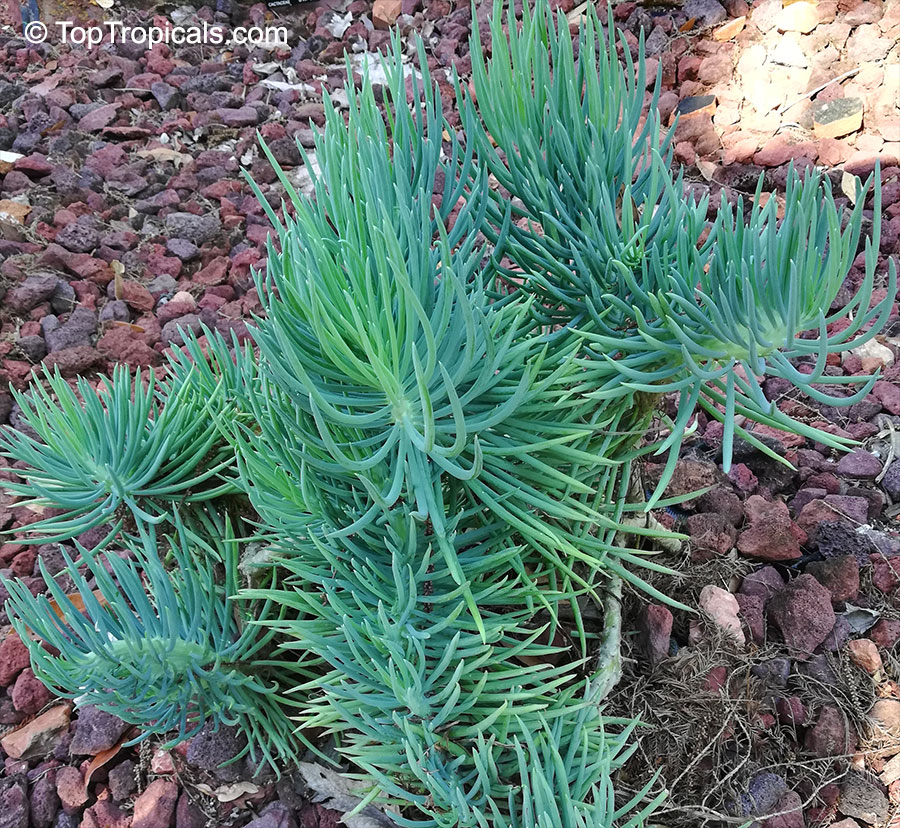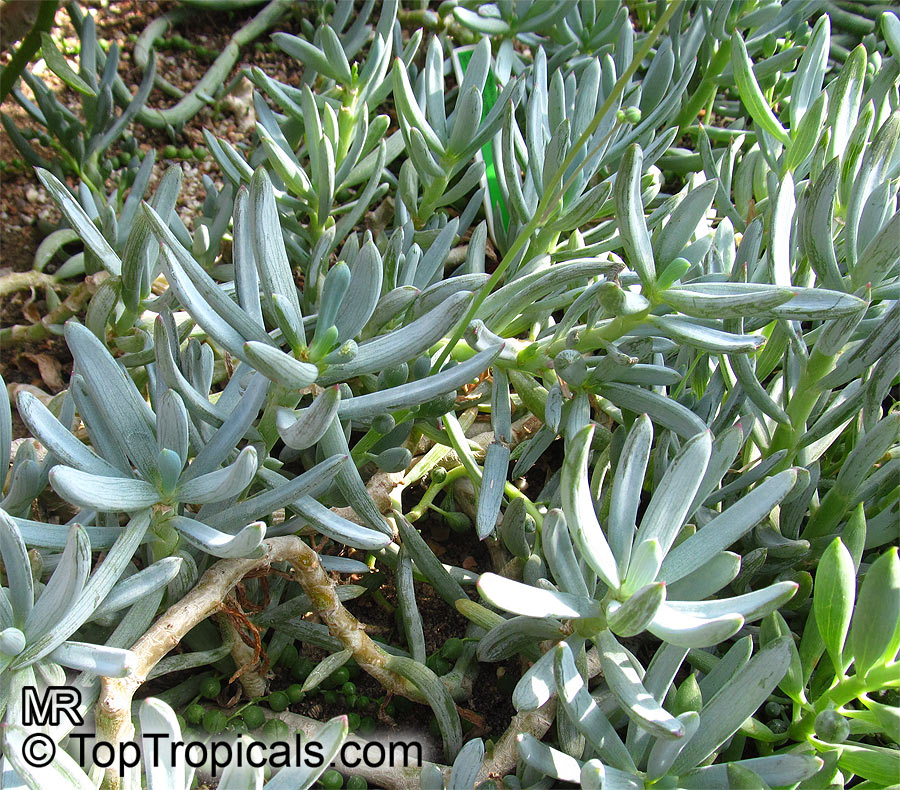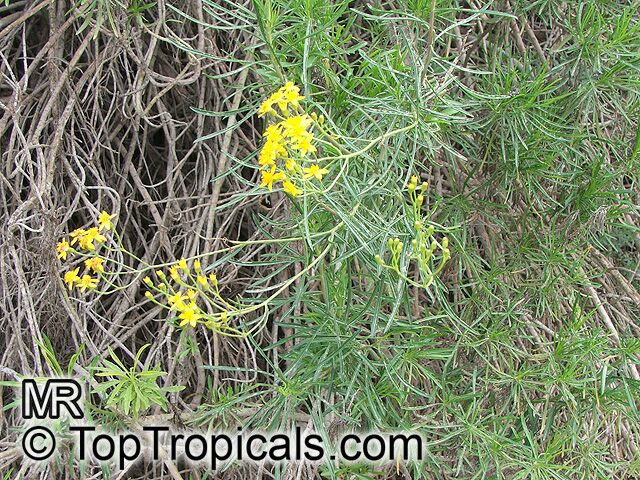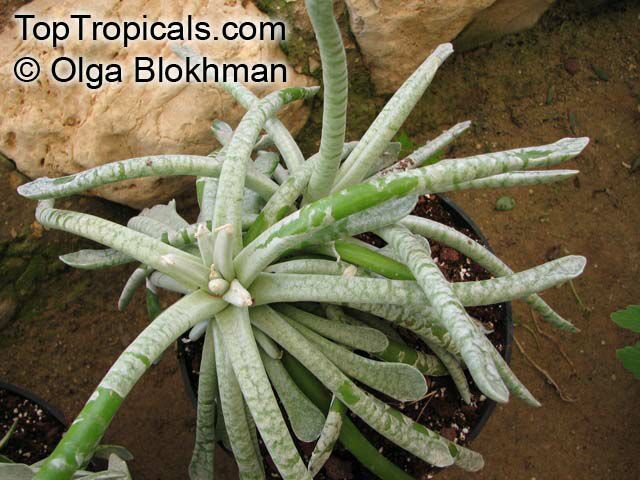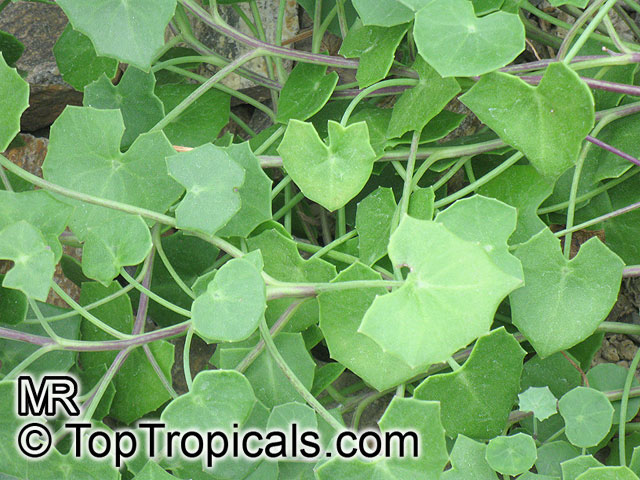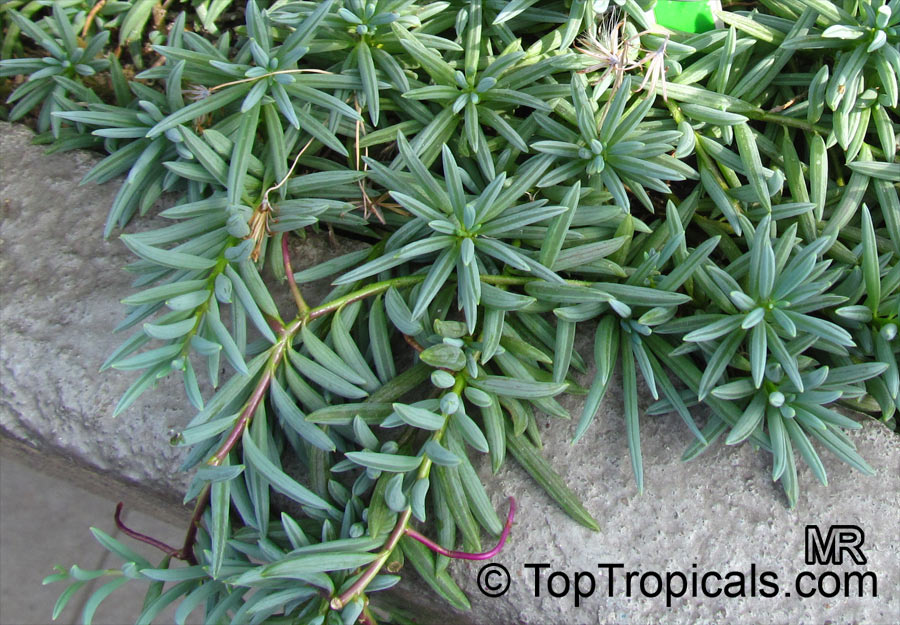Kleinia - Search results
Top Tropicals Plant Encyclopedia
| Number of plants found: 7 |
Botanical names: Curio articulatus, Senecio articulatus, Kleinia articulata
Common names: Hot Dog Cactus, Candle Plant
Family: Asteraceae
Origin: South Africa





Senecio articulatus has fat cylindrical stems with periodic constrictions, giving an impression of sausage-links. These are decoratively enhanced by reddish-purple markings. The notched and dissected leaves are a bright green, sometimes flushed with purple.
Botanical names: Kleinia neriifolia, Senecio kleinia
Common name: Verode
Family: Asteraceae
Origin: Canary Islands





Botanical names: Kleinia pendula, Senecio pendulus
Common name: Tapeworm Plant
Family: Asteraceae
Origin: Africa





Kleinia pendula has prostrate marbled succulent stems that arch over and touch the soil where they root, sending out more stems. The inflorescence is a showy red pom-pom of many tiny flowers.
Botanical names: Kleinia stapeliiformis, Senecio stapeliiformis
Common name: Pickle Plant
Family: Asteraceae





Botanical names: Senecio fulgens, Kleinia fulgens
Common names: Orange thistle, Coral senecio
Family: Asteraceae
Origin: KwaZulu-Natal, Mozambique and Zimbabwe






Senecio fulgens, commonly known as Orange Thistle, is a small shrub native to KwaZulu-Natal, Mozambique and Zimbabwe. It grows to a height of 2-5ft and thrives in full sun and dry conditions. Its ornamental foliage and brilliant yellow and orange flowers make it a valued garden plant, and it also attracts butterflies and hummingbirds. The best time to sow seed is in autumn or winter, and it can successfully be grown in USDA zones 9-11.
When grown in a pot in colder areas, Senecio fulgens needs to be kept in a sunny spot and watered sparingly. For best results, choose a pot with drainage holes and use a well-draining soil mix. Water only when the surface of the soil feels dry to touch, as overwatering can cause root rot and other health issues. During the winter months, it may go dormant and lose its leaves. This is normal and no additional water is needed during this time.
Fertilizing can be done in the spring, using an all-purpose fertilizer. To encourage bushier growth, prune Senecio fulgens throughout the growing season. During the dormant winter period, it can be trimmed down to the desired shape.
Senecio fulgens is a stunning addition to any garden and is surprisingly easy to care for. By following the proper care and planting guidelines, you can have a beautiful shrub that not only provides vibrant colors throughout the season but also attracts wildlife.
Botanical name: Senecio kleiniiformis
Common name: Spear Head
Family: Asteraceae
Origin: South Africa






Botanical name: Senecio sp.
Common name: Senecio
Family: Asteraceae
Origin: South Africa









Senecio includes over 1000 species from all over the world. A large number of these species are common perennial or annual weeds, but some are succulent and caudiciforms from tropical and subtropical areas. A number of succulent relatives have now been moved to the genus Kleinia. The genus Curio contains over 20 species, all of them formerly belonging to the genus Senecio.
Nothing found
